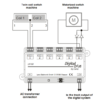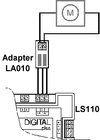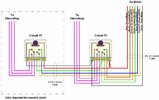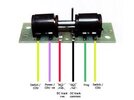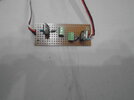Hi , I am trying with limited electronics knowledge to complete a model railway almost completed by my late father , it is DCC and computer controlled via windows based software ( RR&Co)and I only have one thing left to complete in that the layout incorporates 2 Electromagnetic uncouplers which are just simple single coil devices that produce a magnetic field to lift a coupler on a railway wagon or carriage and so enable seperation of said wagons automatically , I propose to do this via a Lenz LS150 DCC accessory decoder utilising just 2 of it's 6 outputs , the outputs for twin coil points/switches are of no use to me as they use 3 wires but they can be converted to 2 wire output by the use of 2 diodes per output ( see attached diagram ) I am worried that the flyback voltage generated when an uncoupler is de energised will damage the circuitry of the LS 150 but am wondering if the the 2 diodes used to allow 2 wire output will give the necessary protection ? , I have tried on model railway forums to get a definitive answer but have so far got almost nowhere .

